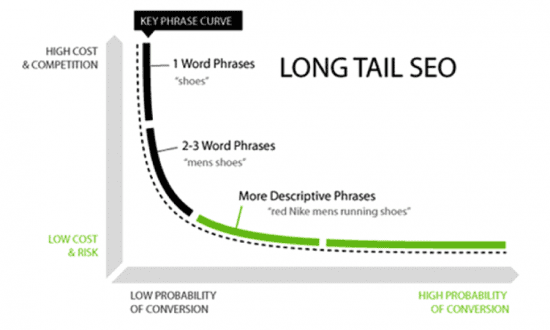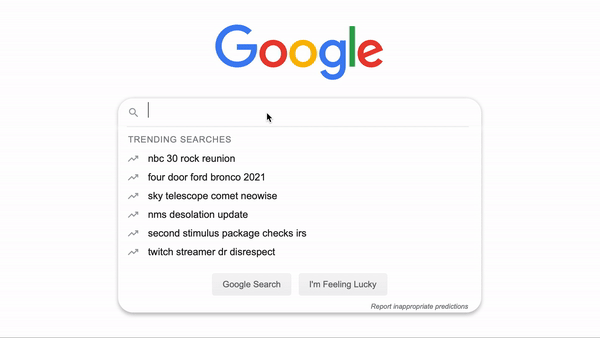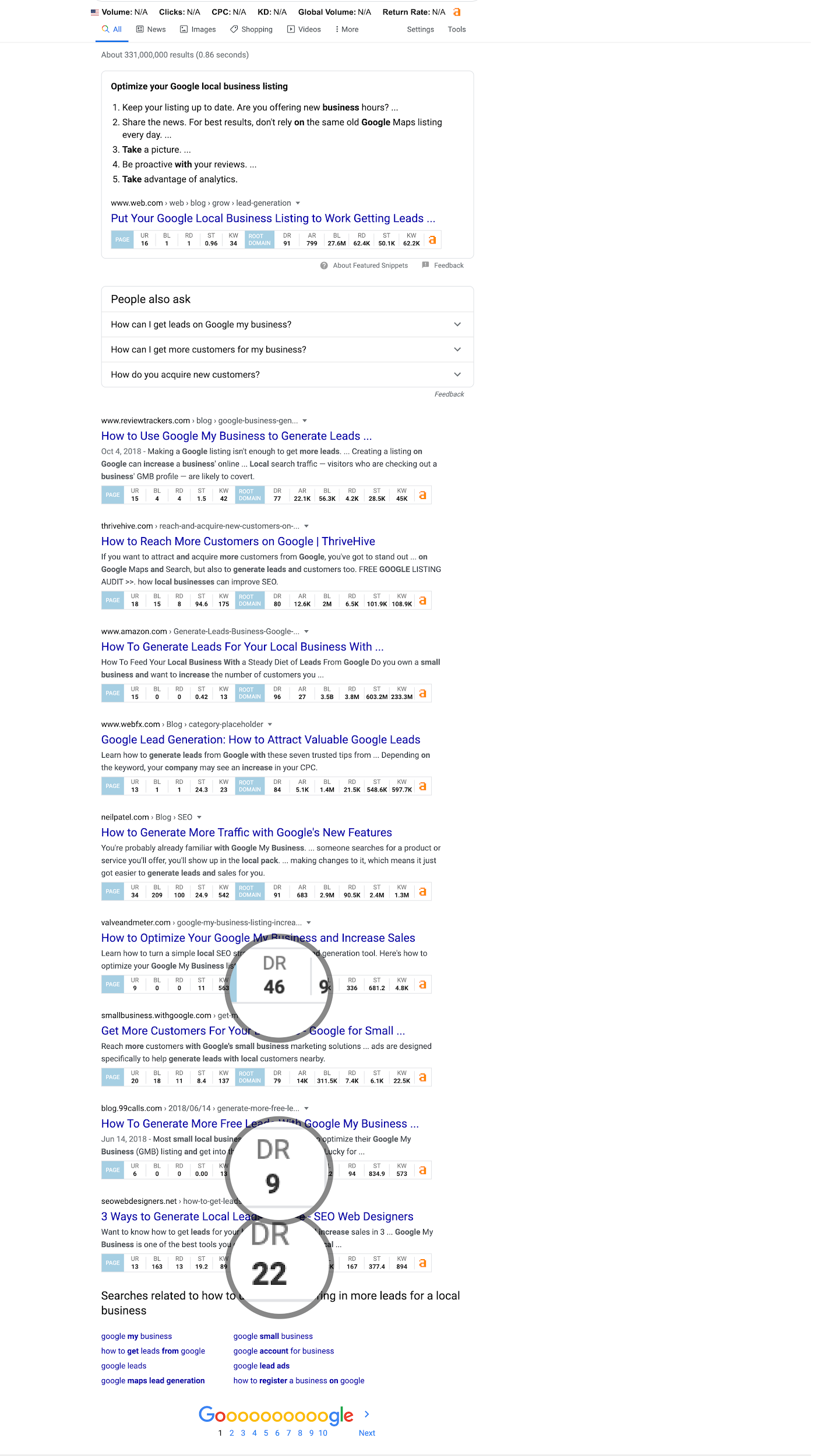How to Write Keywords for SEO - The Right Way!
It can be confusing to grasp how to write keywords for SEO.
There are a number of different skills that go into learning not just how to find keywords, but how to include them in your content to make sure you’re found on Google.
According to Moz, first page rankings on Google are responsible for 72% of the total traffic clicks, while the second page accounts for less than 6%.
This means that if your website is not on the first page of Google, you’re missing out on a ton of daily traffic that your website could be getting.
This is why so many business owners feel frustrated when trying to grow their business online.
They find themselves either being overwhelmed trying to learn all of the information and do it themselves, or they spend endless amounts of money and don’t know if they’re really generating an ROI.
A study done by Devrix shows that 6 out of every 10 local businesses in 2018 did not have a website for their business.

This means that they are potentially missing out on thousands of visitors monthly.
Whether the business is local or online, we’ve seen countless business owners go through this time and time again, that's why we’ve decided to give a complete breakdown of how you can start capitalizing on Google’s first page traffic in the most effective way possible.
Understanding Keywords and SEO
SEO (Search Engine Optimization) is the process of optimizing a web page to rank higher in Google to get traffic from the organic search results.
In order to properly optimize a web page, it involves using keywords to accurately describe what your content is about. Google then crawls your web page and decides where you should be placed in the search engines.
While Google has over 200 ranking factors, keywords are one of the factors that we can directly optimize to help us appear higher in the SERPS.
But before you can optimize a website for keywords, you have to know exactly what keywords your target audience is searching for.
Let’s talk about how to find the right keywords that will drive visitors to your website.
What Is Keyword Research?
Keyword research is the practice of researching and analyzing search phrases that people type into search engines. The purpose of keyword research is to find and understand the exact questions and topics your audience is searching for and then optimize your website to appear for those terms.
What Makes Keyword Research Important?
An estimated 5.8 billion searches are done per day on Google. This means that if you’re not achieving the traffic you want, it’s not because there’s a lack of traffic but a lack of rankings.
Being visible for the search phrases your potential customers are searching for translates into more exposure for your company, which eventually means more sales.
Without conducting proper keyword research you can easily become lost in a sea of other websites online.
So now that you know what keyword research is and why it’s important, how do you actually find the keywords your customers are looking for?
Finding Keywords for SEO
Knowing about keywords is only half the battle, but you also need to know which keywords are the best to go after.
One of the biggest misconceptions about keywords is that it is always best to go for the higher search volume.
According to wordstream, the average conversion rate for long-tail keywords is 36%.

Longer keyword phrases convert higher because any potential customer who lands on your web page is looking for a very specific answer to their question rather than a broad topic.
The closer you can get to answering someone’s question spot on, the higher your conversions will be and long-tail keywords help to achieve this.
These longer tail keywords may be more difficult to find but they are worth the search.
Now we’ll show you how to find these keywords using a completely free tool.
Using a Free Keyword Tool
While there are plenty of paid tools currently available that can assist with your keyword research, no one tool is 100% accurate.
The most reliable free tool currently available is Google Auto Suggest.
If you’ve ever typed a question or topic into Google and see the search results auto populate, this is Google Auto Suggest at work.

These populated suggestions are questions that Google users are searching. These are the questions that your website should be focused on answering for your potential customers.
Further analyzing the competition involves diving deeper into the first page results to see how many high authority websites are ranking.
Depending on the DA (Domain Authority) of your website will determine if you have a chance to compete with the first page competitors.
If your website is relatively new with low DA, generally you can compete with websites that have a DA of 45 and under.
If you’ve had your website for awhile and it has a DA of 20+, it’ll be easier to compete with domains that have a DR of 45+.

For the above example, we are focusing on the keyword “how to use google to bring in more leads for a local business”.
3 out of the top 10 results have a considerably low DA and that leaves some space for a newer site to rank above these results.

For the keyword “how to rank in google local business results”, we can see while the competition is a little more fierce here, we still have some websites with DA’s that are “beatable”.
You’d need a website with more DA for this specific search term.
Both of the above keywords are what is known as “long-tail keywords”. If you can provide a more in-depth answer than the rest of your competitors, not only will you rank higher, but you’ll also have a higher chance of converting that Google visitor into a customer of your business.
Now that you know exactly what type of keywords to find and how to find them, there’s one last step that needs to be taken and that is correctly placing your keywords so Google can properly pick them up and rank them accordingly.
Where To Place Your Keywords
A study done by Hubspot showed that 72% of online marketers think that content marketing is their most effective SEO strategy.
So making sure that your content is properly optimized to be front and center to your potential customers is EVERYTHING!
In order to achieve this you need to properly place your keywords throughout your web page.
URL
Your URL is one of the first on-page components that Google scans to determine what your page is about.
Try your best to keep your URL short and to the point while still having it contain your keyword.

This is a great example of how a URL is supposed to be structured.
Notice how it is descriptive while still having no more than 4 words. A good practice would be to try and keep your url 5 words and under.
Headings
Headings are used on web pages to accurately categorize information in a digestible and easy-to-read way.
Including your keyword in your headings is an important on-page factor. There are usually three headings that are commonly used and they are:
- Heading 1
- Heading 2
- Heading 3
There are more headings but we’ve found they do not really have an affect on your SEO as much as these three do, with heading 1 having the most impact.
Heading 2 and 3 should include secondary keywords in order to support your main keyword and also to allow Google to pick up on other relevant terms related to your primary keyword.

In the above example, the keyword is used in the heading 1.

Here’s another example, in this heading 2 there is a secondary keyword used here and it is “Google My Business Page”.
The reason that this is a secondary keyword is because it supports the primary keyword “How To Rank Higher in Google Maps” without actually using that same phrase.
Although the same phrase is not used, someone looking for information on the topic of how to rank higher in Google maps will also be interested in verifying their Google My Business page as well.
Content
Your primary and secondary keywords should also be used throughout your page’s content. Back in the day, you could get away with keyword stuffing but those days are long gone.
In order to successfully rank in Google, you need to provide valuable and actionable information to the end user.
The more informative your content is, the better your rankings will be.
With that being said, using your primary and secondary keywords naturally a few times throughout your content is good practice.

Meta Title
The meta title is not just an on-page SEO signal but it's also the first thing potential customers see before they choose to click on your website.
This valuable piece of real estate should include your primary keyword while also informing the reader about what information they’ll be reading after they click.

Meta Description
Your meta description should also include your main keyword while enticing the reader to click your website to learn more and get an answer to their question.

While you only have 155-160 characters to get your point across, it is best to leave this section off with a cliffhanger to like the above example.
Not only does it give the reader a brief description about the content but it leaves them wondering what else you have to say.
Are You Ready To Start Writing for SEO The Right Way?
There are thousands of business owners who are struggling to be seen online.
Don’t be the business owner that puts out a tremendous amount of effort with minimal results.
Be the business owner that finally takes a hold of their online marketing and substantially increases their revenue using the power of online marketing.
Other business owners have done it and so can you.
Just take a look at what our client Bob Johnson said
"SearchWise Media is simply fantastic. We've been working with them and using their services for many projects. Their team is extremely knowledgeable, efficient, and capable of working with both local small businesses and large, worldwide corporations. I highly recommend them for top level digital marketing services.”



